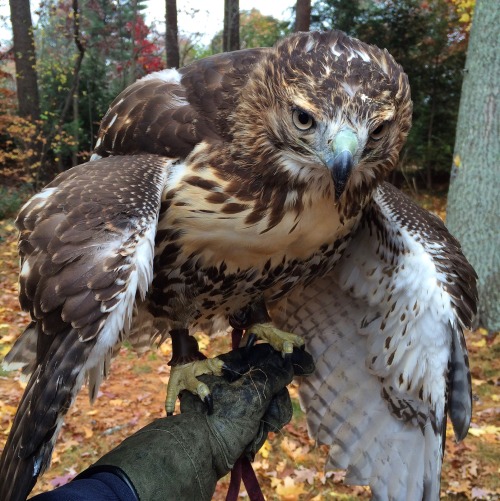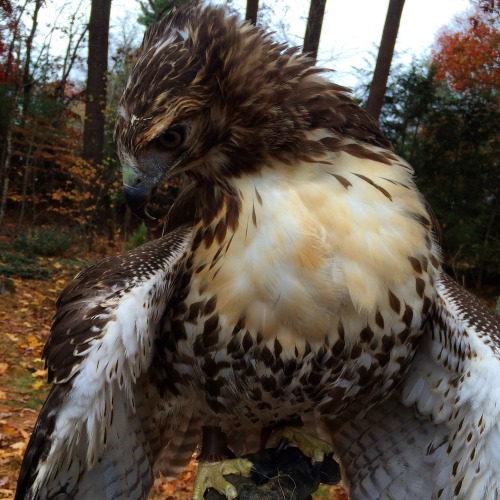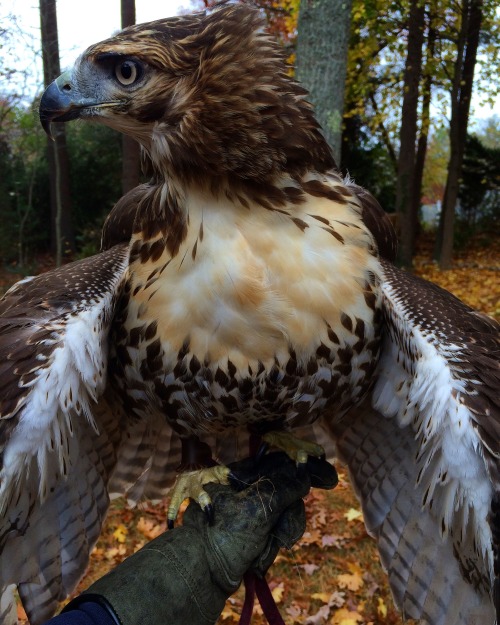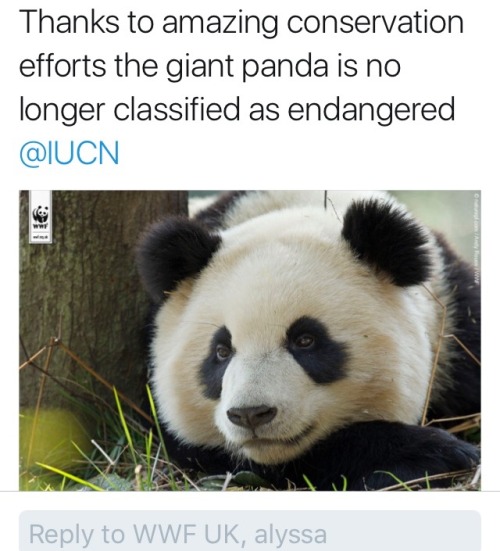How Do You Disentangle A Humpback Whale?
How do you disentangle a humpback whale?
Very, very carefully – and without getting in the water. The Hawaiian Islands Large Whale Entanglement Response Network has it down to a science.

Photo: J. Moore/NOAA Permit #15240
Each year, numerous whales and other marine animals become entangled in a variety of materials, such as fishing gear, rope and plastic bags. Entanglement can physically harm animals while also impairing their movement. An entangled animal can find it difficult or impossible to feed, and at times the entanglement can drown them.
That’s where the Hawaiian Islands Large Whale Entanglement Response Network comes in. These highly-trained professionals from Hawaiian Islands Humpback Whale National Marine Sanctuary, working closely with and under authority of NOAA Fisheries’ Marine Mammal Health and Stranding Response Program, know how to safely rescue creatures like humpback whales from entanglement.

Humpback whales can hold their breath for much longer and swim faster than a human can, and an entangled whale is often stressed or panicked. Trying to free a 40-ton whale that likely doesn’t realize rescuers are there to help can be dangerous for the animal and for humans. Rescuers never enter the water to free an entangled whale.
Instead, rescuers grab hold of the entangled lines using a grappling hook, then attach a series of buoys to the lines. This keeps the whale at the surface and slows it down enough for the disentanglement team, following the whale in a small inflatable boat, to gain access to the animal and the lines it’s tangled in. However, even with the buoys attached, the inflatable boat may still get towed behind the animal. Humpback whales are strong animals that can move rapidly through the water, so this can be quite dangerous. It is important that the disentanglement team be trained and prepared to respond to the whale’s movements.

As the whale grows tired, the rescuers work their way closer. Once they’re close enough, they use a custom-designed knife attached to a long pole to cut away the gear entangling the whale. These knives are specially designed to cut the rope but not the whale. Typically, after several passes, the whale is free!
Once the whale is untangled, the team uses the grappling hook once again to collect and remove the debris from the water so that other animals don’t become trapped in the future.

Photo: Ed Lyman/NOAA, under NOAA permit #15240
Entanglement is a problem around the globe, and sanctuary staff can only help a small percentage of entangled whales. Since 2002, Hawaiian Islands Humpback Whale National Marine Sanctuary has received more than 100 confirmed reports of entangled humpbacks, representing at least 70 different animals — and more entanglements go unseen and unreported.
With that in mind, prevention is the ultimate objective: by reducing the amount of derelict fishing gear and other debris in the ocean and making actively fished gear more “whale safe,” we can reduce the number of whales and other animals that get entangled and hurt or killed.
Watch the Disentanglement Response Network in action:
GIFs via NOAA’s Marine Mammal Health and Stranding Response Program, under NOAA permits 932-1905, 15240 932-1489, and 932-1905-01/MA-009526-1, and Hawaii State Permit PMAL-2015-206.
More Posts from Llamaslikesciencetoo and Others


Manatee

The name “hippopotamus” comes from a Greek word meaning “water horse” or “river horse.” But hippos are not related to horses at all—in fact, their closest living relatives may be pigs or whales and dolphins! (photo: Peter Csanadi)





Stages of decomposition
Five general stages are used to describe the process of decomposition in vertebrate animals: Fresh, Bloat, Active and Advanced Decay, and Dry/Remains. The general stages of decomposition are coupled with two stages of chemical decomposition: autolysis and putrefaction. These two stages contribute to the chemical process of decomposition, which breaks down the main components of the body.
Fresh
The fresh stage begins immediately after the heart stops beating.[5] Since blood is no longer being pumped through the body it drains to the dependent portions of the body, under gravity, creating an overall bluish-purple discolouration termed livor mortis or, more commonly, lividity. Shortly after death, within three to six hours, the muscular tissues become rigid and incapable of relaxing which is known as rigor mortis. From the moment of death, the body begins losing heat to the surrounding environment, resulting in an overall cooling called algor mortis.
Once the heart stops, chemical changes occur within the body and result in changes in pH, causing cells to lose their structural integrity. The loss of cell structure brings about the release of cellular enzymes capable of initiating the breakdown of surrounding cells and tissues. This process is known as autolysis. Visible changes caused by decomposition are limited during the fresh stage, although autolysis may cause blisters to appear at the surface of the skin.
Oxygen present in the body is quickly depleted by the aerobic organisms found within. This creates an ideal environment for the proliferation of anaerobic organisms. Anaerobic organisms, originating in the gastrointestinal tract and respiratory system, begin to transform carbohydrates, lipids, and proteins, to yield organic acids (propionic acid, lactic acid) and gases (methane, hydrogen sulphide, ammonia). The process of microbial proliferation within a body is referred to as putrefaction and leads to the second stage of decomposition, known as bloat.
Blowflies and flesh flies are the first carrion insects to arrive, and seek a suitable oviposition site.
Bloat
The bloat stage provides the first clear visual sign that microbial proliferation is underway. In this stage, anaerobic metabolism takes place, leading to the accumulation of gases, such as hydrogen sulphide, carbon dioxide, and methane. The accumulation of gases within the bodily cavity causes the distention of the abdomen and gives a cadaver its overall bloated appearance. The gases produced also cause natural liquids and liquefying tissues to become frothy. As the pressure of the gases within the body increases, fluids are forced to escape from natural orifices, such as the nose, mouth, and anus, and enter the surrounding environment. The buildup of pressure combined with the loss of integrity of the skin may also cause the body to rupture.
Intestinal anaerobic bacteria transform haemoglobin into sulfhemoglobin and other colored pigments. The associated gases which accumulate within the body at this time aid in the transport of sulfhemoglobin throughout the body via the circulatory and lymphatic systems, giving the body an overall marbled appearance.
If insects have access, maggots hatch and begin to feed on the body’s tissues. Maggot activity, typically confined to natural orifices and masses under the skin, causes the skin to slip and hair to detach from the skin. Maggot feeding, and the accumulation of gases within the body, eventually leads to post-mortem skin ruptures which will then further allow purging of gases and fluids into the surrounding environment. Ruptures in the skin allow oxygen to re-enter the body and provide more surface area for the development of fly larvae and the activity of aerobic microorganisms. The purging of gases and fluids results in the strong distinctive odours associated with decay.
Active decay
Active decay is characterized by the period of greatest mass loss. This loss occurs as a result of both the voracious feeding of maggots and the purging of decomposition fluids into the surrounding environment. The purged fluids accumulate around the body and create a cadaver decomposition island (CDI). Liquefaction of tissues and disintegration become apparent during this time and strong odours persist. The end of active decay is signaled by the migration of maggots away from the body to pupate.
Advanced decay
Decomposition is largely inhibited during advanced decay due to the loss of readily available cadaveric material. Insect activity is also reduced during this stage. When the carcass is located on soil, the area surrounding it will show evidence of vegetation death. The CDI surrounding the carcass will display an increase in soil carbon and nutrients, such as phosphorus, potassium, calcium, and magnesium; changes in pH; and a significant increase in soil nitrogen.
Dry/remains
During the dry/remains stage, the resurgence of plant growth around the CDI may occur and is a sign that the nutrients present in the surrounding soil have not yet returned to their normal levels. All that remains of the cadaver at this stage is dry skin, cartilage, and bones, which will become dry and bleached if exposed to the elements. If all soft tissue is removed from the cadaver, it is referred to as completely skeletonized, but if only portions of the bones are exposed, it is referred to as partially skeletonised.

x
Astronaut Scott Kelly to Retire from NASA in April
NASA logo. March 13, 2016 NASA astronaut and one-year crew member Scott Kelly will retire from the agency, effective April 1. Kelly joined the astronaut corps in 1996 and currently holds the American record for most time spent in space. After retiring, Kelly will continue to participate in the ongoing research related to his one-year mission. He will provide periodic medical samples and support other testing in much the same way that his twin brother, former astronaut Mark Kelly, made himself available for NASA’s Twins Study during his brother’s mission. “This year-in-space mission was a profound challenge for all involved, and it gave me a unique perspective and a lot of time to reflect on what my next step should be on our continued journey to help further our capabilities in space and on Earth,” Kelly said. “My career with the Navy and NASA gave me an incredible chance to showcase public service to which I am dedicated, and what we can accomplish on the big challenges of our day. I am humbled and excited by new opportunities for me to support and share the amazing work NASA is doing to help us travel farther into the solar system and work with the next generation of science and technology leaders.”
Image above: NASA astronaut Scott Kelly inside the cupola of the International Space Station, a special module that provides a 360-degree viewing of the Earth and the station. Image Credit: NASA. Kelly flew in space four times, beginning with space shuttle Discovery’s trip to NASA’s Hubble Space Telescope on the STS-103 servicing mission in 1999. On his second mission, STS-118, he crossed the threshold of the International Space Station for the first time as commander of space shuttle Endeavour. He returned to the station for a six-month stay in 2010, commanding Expedition 26. A veteran of spaceflight, Kelly accepted the opportunity to participate in NASA’s unprecedented yearlong space station mission, which aimed to expand the boundaries of space exploration beyond low-Earth orbit through the collection of critical data on how the human body responds to extended space missions. On this mission, Kelly eclipsed two American space records. “Records are meant to be broken,” Kelly said. “I am looking forward to when these records in space are surpassed.” Kelly broke the American record for most cumulative time in space during his one-year mission, accruing 520 days. “Scott’s contributions to NASA are too many to name,” said Brian Kelly, director of Flight Operations at NASA’s Johnson Space Center in Houston. “In his year aboard the space station, he took part in experiments that will have far-reaching effects, helping us pave the way to putting humans on Mars and benefiting life on Earth. His passion for this work has helped give hundreds of thousands of people a better understanding of what NASA does, thanks in part to the numerous photos and updates he shared from space. We appreciate his years of service and anticipate many benefits to come from them, thanks to the research he’s supporting.” Related links: One-year crew: https://www.nasa.gov/content/one-year-crew Twins Study: https://www.nasa.gov/twins-study For Kelly’s biography, visit: http://www.jsc.nasa.gov/Bios/htmlbios/kellysj.pdf Image (mentioned), Text, Credits: NASA/Tabatha Thompson/Johnson Space Center/Brandi Dean/Karen Northon. Greetings, Orbiter.ch Full article



dragon 🐉







Swimming With Whale Sharks - Philippines by Tommy Schultz
So I am not the only one who is still bitter about the Norwegian calf?
Absolutely not. I was anti when baby Norway showed up and as far as I can recall only one other anti actually had the common sense and compassion to actually publicly want that calf rescued. It honestly was the most emotional, frustrating time I had ever had in the captivity debate, and it was absolutely the last straw I could take from the anticaptivity movement, so ultimately that was one of the several pushes I had towards becoming a procap.
For those who missed it, some highlights of Baby Norway’s short life include;
- Orca “experts” / “researchers” flat-out saying that they would not allow the whale to be rescued – “Indeed, put this orca in a tank/aquarium is not even an option!! Norway does not want to see “Morgan’s case” happening again!“
- Morgan, who entered into captivity an absolute skeleton and looked like a neonate at two years old, and is now a beautiful, vibrant, healthy adult female. They don’t want… that to happen again. Okay. Speaks volumes of the anticaptivity agenda, because what did happen with baby Norway, is that she stranded, barely alive after a prolonged period of starvation, and got a round of bullets in her head (exactly like another Norwegian calf that stranded a year before her).
- They completely ignored this fragile starving, injured, INFANT CALF. Oh, but they “talked about a plan” so that’s fine.
- The infant (Let me stress that. This was a neonate calf, days old at best.), visibly starving already when it was first seen, should have at the VERY least been secluded into a small pen and started on a nutritious formula. Instead, they tossed it fish. And I directly quote, “Its body needs milk of course, but at least some calories!”. The optimism is disgusting, considering what this calf was going through, on its own, without help.
- Baby Norway went missing for a while – it wasn’t known if she “found her family” like activists had been hoping, simply wandered off, or if she died. But she showed back up. This time she stranded and she was barely alive. She was given a lethal injection via her dorsal (the only warm place left on her body that had entirely gone cold) and then shot in the head with a shot gun, “just in case”. And that was it.
Baby Norway vocalizing underwater.
Baby Norway’s last moments.
Rest in peace, beautiful little girl.


the only good news to come out of 2016

Slithering and clawing and swimming through the liquid film between individual grains of sand, mud, and other sediment, is a thriving ecosystem of microscopic organisms that spend their entire existence in a world so miniscule that, as Rachel Carson once wrote, a droplet of water separating two grains of sand is “like a vast, dark sea.”
Unicellular organisms coat the sediments and ride the water between the grains. And animals, microscopic to us yet behemoths to the bacteria, algae, and protists they share these interstitial worlds with, take the roles of herbivore, carnivore, and detritivore to create rich and complex food webs…
-
 atditelriowhoi liked this · 1 year ago
atditelriowhoi liked this · 1 year ago -
 protectorofoceans reblogged this · 2 years ago
protectorofoceans reblogged this · 2 years ago -
 called-kept liked this · 4 years ago
called-kept liked this · 4 years ago -
 joybirds reblogged this · 4 years ago
joybirds reblogged this · 4 years ago -
 escapism88 reblogged this · 4 years ago
escapism88 reblogged this · 4 years ago -
 crunchingtiger reblogged this · 4 years ago
crunchingtiger reblogged this · 4 years ago -
 crunchingtiger liked this · 4 years ago
crunchingtiger liked this · 4 years ago -
 aeshnacyanea2000 reblogged this · 4 years ago
aeshnacyanea2000 reblogged this · 4 years ago -
 thomasbrisenio liked this · 4 years ago
thomasbrisenio liked this · 4 years ago -
 leeeeedya liked this · 4 years ago
leeeeedya liked this · 4 years ago -
 normandy55 liked this · 4 years ago
normandy55 liked this · 4 years ago -
 seissn reblogged this · 5 years ago
seissn reblogged this · 5 years ago -
 angieea liked this · 5 years ago
angieea liked this · 5 years ago -
 sunflower-ash13 liked this · 5 years ago
sunflower-ash13 liked this · 5 years ago -
 inner-space-oddity liked this · 5 years ago
inner-space-oddity liked this · 5 years ago -
 draganies liked this · 5 years ago
draganies liked this · 5 years ago -
 carole2309 liked this · 5 years ago
carole2309 liked this · 5 years ago -
 ecomrade reblogged this · 5 years ago
ecomrade reblogged this · 5 years ago -
 perichord liked this · 5 years ago
perichord liked this · 5 years ago -
 justherejusttherejusteverywhere reblogged this · 5 years ago
justherejusttherejusteverywhere reblogged this · 5 years ago -
 typical-hipster liked this · 5 years ago
typical-hipster liked this · 5 years ago -
 theshirkitten reblogged this · 5 years ago
theshirkitten reblogged this · 5 years ago -
 theshirkitten liked this · 5 years ago
theshirkitten liked this · 5 years ago
Mainly interested in ecology, but also the entirety of science.
179 posts